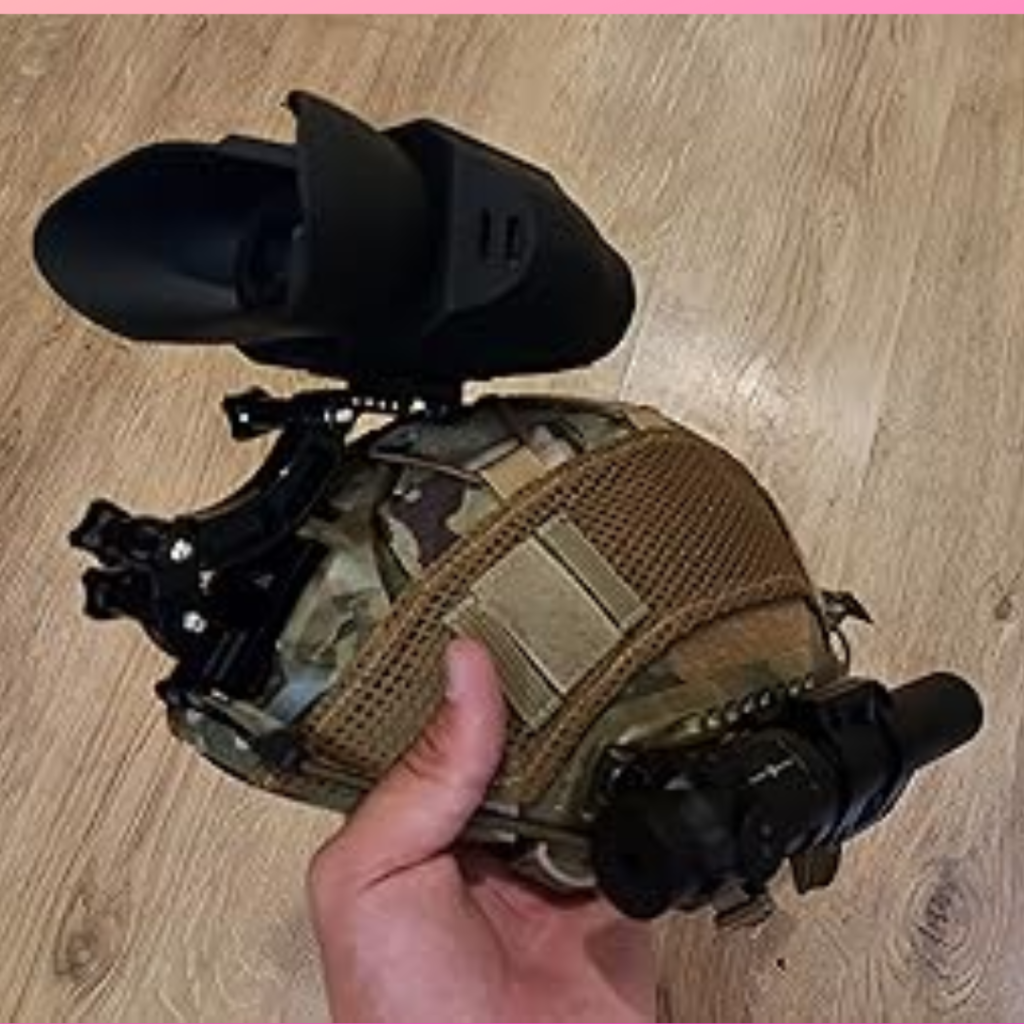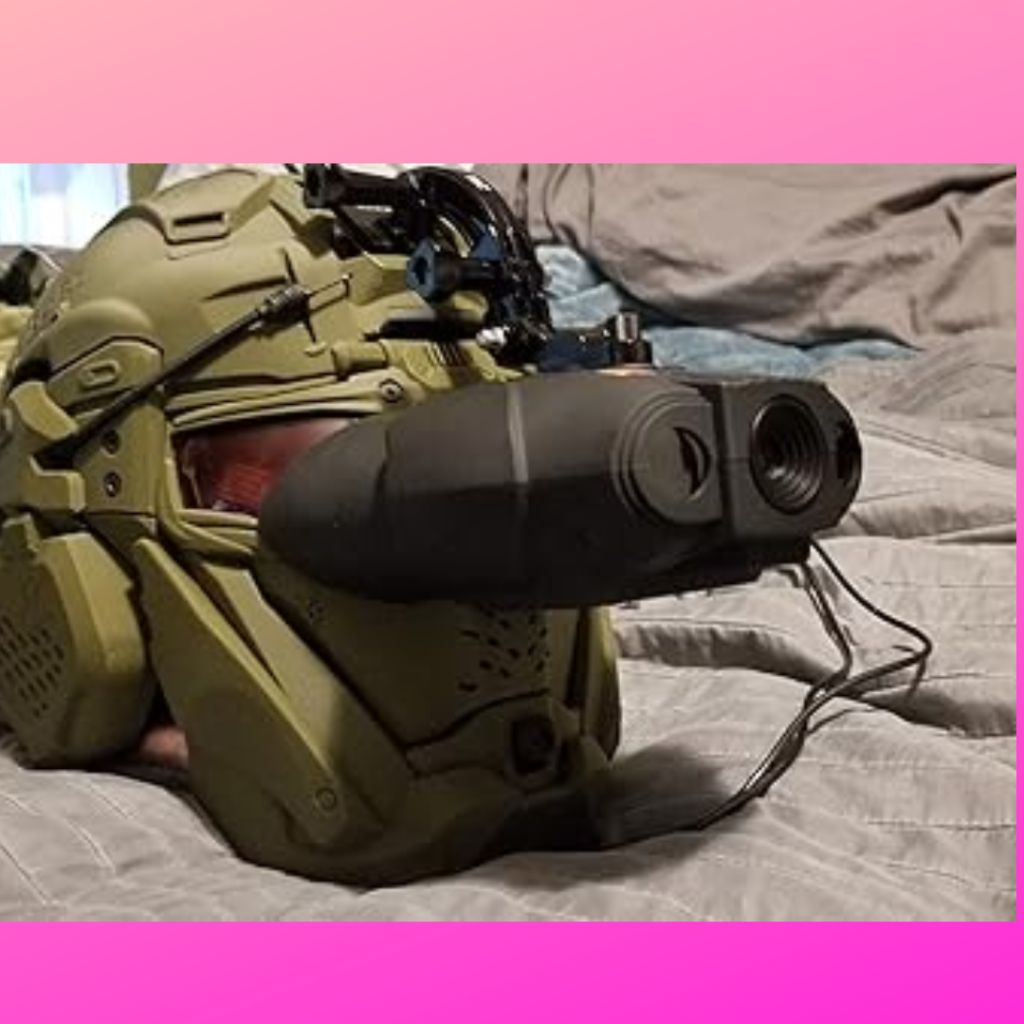Ever wondered why night vision goggles are so expensive? I did too when I first checked the price. Some cost as much as a used car! But there’s a reason. They’re not just fancy binoculars. They use high-tech parts, tough materials, and years of research. In this article, I’ll explain what makes them so pricey, how much night vision goggles cost, and if they’re worth it. Let’s dive in!
The Technology Behind Night Vision Goggles
Ever tried walking in the dark? It feels like stepping into a black hole. You guess where things are, hoping not to trip. But night vision goggles change everything. They light up the dark, showing you a whole new world. Let’s see how they work.
How Night Vision Works: Image Intensification vs. Thermal Imaging
Night vision goggles use two main methods: image intensification and thermal Imaging.
- Image Intensification makes the most of low light. It takes tiny bits of light—like from the moon or street lamps—and boosts them thousands of times. That’s why everything looks green in night vision.
- Thermal Imaging works differently. Instead of using light, it detects heat. Warm objects—like people, animals, or running cars—stand out against cooler backgrounds. This works even in total darkness, fog, or smoke.
Most military and high-end goggles use image intensification, while hunters and search teams often prefer thermal Imaging.
Key Parts of Night Vision Goggles
- Image Intensifier Tubes (IITs) – The Core of Night Vision
- IITs are the magic behind night vision. They grab tiny amounts of light, boost them, and create a bright image. Higher-end models (Gen 3 and 4) give clearer views, last longer, and work better in low light.
- Lenses and Optics – Sharpness Matters
- Good lenses make a huge difference. Cheap ones blur details, while top-quality glass gives a sharp, clear image. Some goggles even zoom in, letting you see far away.
- Housing and Durability – Built Tough
- These aren’t fragile gadgets. Night vision goggles handle rain, dust, and drops, and military models use tough materials like reinforced plastic or aircraft-grade aluminum.
- Power and Electronics – Battery Life is Key
- Night vision runs on power; the best models balance brightness with battery life. Some use AA or CR123 batteries, while others have rechargeable packs. Smart power-saving features keep them running longer.
Every part of night vision goggles adds to the cost. But it’s not just about the tech. Research, materials, and strict rules also drive up the price—and that’s what we’ll explore next.

What Drives Up the Cost?
So, why are night vision goggles so expensive? It’s not just the tech inside. A mix of high-quality materials, research, rules, and limited availability makes them pricey. Let’s break it down.
High-End Materials & Precision Manufacturing – Why Quality Matters
Think of buying a fancy pair of shoes. You wouldn’t pick the cheapest ones, right? You want something that lasts and feels comfortable. Night vision goggles are like that. They’re made with strong materials like aircraft-grade aluminum and top-notch glass lenses. These parts don’t just cost more—they’re needed to ensure the goggles work well and last. Even the smallest mistake in making them can ruin the image quality. The difference between a $200 pair and a $3,000 pair is in those tiny details.
Complex Engineering & R&D Costs – Years of Research and Development
Building night vision goggles isn’t a quick task. It takes years of research and hard work. Engineers keep improving things like image quality and battery life. This takes time and money. Every new generation, like Gen 3 and 4, is better because of these breakthroughs. So, like a top phone, the latest night vision tech costs more because it takes a lot of work to develop.
Strict Military and Government Regulations – Limited Civilian Availability
Not all night vision goggles are the same. Some are made for the military, with higher-quality parts and precision. There are strict rules about who can buy them. Some models, like Gen 3 and 4, are only for military or government use. This limited availability pushes the price higher. If there’s not enough to go around, prices go up.
Generational Differences – Why Gen 3 and 4 Cost More
The difference between Gen 1 and Gen 4 night vision goggles is like comparing an old flip phone to a new iPhone. Gen 3 works great, but Gen 4 is the top line. These newer models have better features like clearer images, improved low-light performance, and longer lifespans. However, manufacturers need better tech and materials to get these upgrades. This makes Gen 4 much more expensive.
Limited Production & Market Demand – Small Market, High Price
Night vision goggles are in a small market. Not everyone is buying them, so fewer are made. When fewer units are made, the cost per unit goes up. Plus, demand is high. Those who need these goggles are willing to pay more for military use, hunting, or rescue teams. When something is rare and in demand, the price stays high.
When you add it all up, it’s clear why night vision goggles are so expensive. From advanced tech and quality materials to strict rules and small production numbers, every part of them adds to the cost. While the price may seem steep, the value—clear images in total darkness, strong build, and years of development—makes them worth it for many.
How Much Do Night Vision Goggles Cost?
Are you wondering how much night vision goggles cost? The price can vary greatly depending on what you’re looking for. Let me break it down for you in simple terms.
Entry-Level (Gen 1 & Digital): $200–$1,000
If you’re new to night vision, entry-level goggles are a good place to start. These usually cost between $200 and $1,000 and have Gen 1 technology or digital night vision. The image quality isn’t perfect, but they let you see in the dark.
I tried a pair of Gen 1 goggles on a camping trip. They were a bit grainy, but I could see enough to spot animals and walk around safely. For the price, I was happy.
You get Basic image quality, decent low-light performance, and average battery life.
Mid-Range (Gen 2 & 2+): $1,000–$3,000
If you want something better, mid-range goggles are the next step. These usually have Gen 2 or Gen 2+ technology, costing between $1,000 and $3,000.
I tested some Gen 2 goggles during a hike, and they made a huge difference. The image was clearer, and I could see farther. It was like upgrading from an old phone to a new one—everything looked sharper and more detailed.
What you get: Better image quality, improved low-light performance, longer battery life, and more durability.
High-End (Gen 3 & 4, Military-Grade): $3,000–$10,000+
For the best of the best, we’re talking military-grade Gen 3 and Gen 4 goggles, which can cost anywhere from $3,000 to over $10,000.
I got to try a Gen 3 pair once at a shooting range, and the clarity was amazing. Even in almost total darkness, everything was crystal clear. The military uses these goggles for serious activities like search and rescue.
What you get: Excellent image quality, long lifespan, top durability, and great performance in low light.
Where Can You Buy Night Vision Goggles?
So, you want to get a pair of night vision goggles? That’s an awesome choice! But where should you buy them? There are a few places to check out, each with its perks. Let me walk you through them.
Online Retailers – Amazon, Optics Planet, Specialized Gear Stores
If you want convenience, shopping online is the way to go. Websites like Amazon and OpticsPlanet offer a wide range of night vision goggles, from budget-friendly models to high-end options. I’ve bought gear from Amazon before. The best part is reading reviews and seeing the specs. That way, you know you’re getting the right product.
OpticsPlanet is great for outdoor gear. They have experts who can help you find what you need. They also run discounts, which is nice if you want to save some cash.
Tactical and Hunting Stores – Cabela’s, Bass Pro Shops
Tactical and hunting stores are a good choice if you’d rather shop in person. Places like Cabela’s and Bass Pro Shops usually carry a solid selection of night vision goggles. I’ve spent much time at Cabela’s testing out different gear. It’s nice to hold something in your hands before buying it.
But remember, their selection might not be as large as what you’d find online, especially for the high-end models. If you’re starting, this could be a good place to look.
Surplus & Military-Grade Suppliers – Restrictions May Apply
Some surplus and military-grade suppliers sell high-quality, used, or surplus night vision goggles. These can be great for serious users who need top performance at a lower price. But there are rules about who can buy military-grade gear.
I’ve checked out these suppliers before. The deals can be tempting, but the quality can vary. Be sure to check return policies and ask questions before you buy second-hand.
Direct from Manufacturers – ATN, Pulsar, PVS Systems
You can also buy directly from manufacturers like ATN, Pulsar, and PVS Systems. They sell the latest models and offer full warranty support. Customer service is usually available to help if you have questions or issues.
The only downside is you might pay full price, and shipping could take a little longer than buying from other retailers. But buying directly from the manufacturer can give you peace of mind.
In a Nutshell
So, where should you buy your night vision goggles? For variety and ease, try online retailers. If you prefer to shop in person, head to a local tactical or hunting store. Looking for military-grade gear? Check out surplus suppliers—but be careful with second-hand items. If you want the newest tech, go to manufacturers like ATN and Pulsar.
Wherever you shop, always do your research and check reviews to make sure you’re getting the best deal!

Are There Affordable Alternatives?
If you’re looking at night vision goggles and thinking, “Wow, that’s a lot of money,” I get it! They can be pricey, but there are some more affordable options. Let’s go over a few.
Digital Night Vision vs. Traditional Intensifier Tubes
First, let’s talk about digital night vision. It’s a budget-friendly option compared to traditional night vision. Instead of expensive intensifier tubes, digital night vision relies on sensors that capture and display light on a screen. The image quality isn’t as sharp, but it works fine in low light.
I’ve used digital night vision before. It’s not perfect, but it does the job for basic tasks like camping or watching wildlife. And the price? Way lower than the top-tier models. You can find these for $200 to $500, making them much easier to afford.
TL;DR: Digital night vision isn’t as sharp as traditional goggles, but it’s a great choice if you need something basic and affordable.
Thermal Monoculars vs. Standard Night Vision Goggles
Next up, thermal monoculars. These work by detecting heat instead of light so they can see in complete darkness, fog, or smoke. That’s something standard night vision goggles can’t do.
However, thermal monoculars can be more expensive than regular night vision. They usually cost around $1,000 to $2,000, but that’s still less than high-end models. I’ve tried one, and it was amazing to see animals at night based on heat. But remember that thermal doesn’t show as much detail in the distance since it only detects heat.
TL;DR: Thermal monoculars are great for seeing heat sources in darkness, but they may not offer as much detail.
Used/Refurbished Options – Risks and Benefits
Finally, buying used or refurbished night vision goggles is possible. It’s tempting because you can get high-end models for less. But there’s a catch. The risk is that you might get a pair that’s not in great condition.
I’ve bought second-hand gear before, and it can be a good deal, but you need to be careful. Make sure you buy from trusted sellers and check their return policy. Knowing you can return the item if it doesn’t work right is always better.
FAQs (Optimized for Voice Search & Featured Snippets)
Why is night vision so expensive compared to thermal imaging?
Night vision goggles cost more because they use complex technology like image intensifier tubes (IITs), which enhance low light to create clear images. On the other hand, thermal imaging detects heat and doesn’t need the same detailed processing. Night Vision also uses high-quality materials and precision engineering, driving the price. Thermal monoculars are often cheaper since they don’t rely on the same level of detail.
What’s the cheapest way to get night vision?
If you’re looking for affordable night vision, digital models are your best bet. These use digital sensors, not traditional tubes, so they cost less. While they don’t offer the sharpness of high-end goggles, they still let you see at night. You can find these for $200 to $500, making them a budget-friendly choice for camping or wildlife watching.
Can civilians buy military-grade night vision?
Civilians can buy military-grade night vision goggles, but it’s not easy. There are strict rules, and many high-end models (like Gen 3 and Gen 4) are reserved for military or government use. However surplus or second-hand goggles can sometimes be found, but you may need to meet certain requirements to purchase them.
Are night vision goggles legal in the USA?
Yes, night vision goggles are legal in the USA, but there are limits. Some advanced models, like Gen 3 and Gen 4, are tightly regulated, and civilians might need special permission to own them. Always check local laws to ensure you follow the rules when buying or using night vision equipment.
How long do night vision goggles last?
Night vision goggles can last 2 to 10 years, depending on the quality and usage. Higher-end models like Gen 3 and 4 can last up to 10 years if cared for properly. Entry-level models may not last as long. With proper maintenance, such as storing them in a case and taking care of the battery, your goggles can last long.
Conclusion
So, are night vision goggles worth the price? After looking at the tech, costs, and all the details, I can say—yes, they can be, but it really depends on what you need. If you’re someone who spends a lot of time outdoors, hunts, or needs reliable gear for safety, paying more for higher-end models is worth it. The clarity, strength, and performance in low light are top-notch. But if you’re just looking to see in the dark for simple tasks, cheaper options can still work well.
I’ve used a few different models, and trust me, as you go up in price, the image quality improves a lot. The Gen 3 goggles I used on a hike were amazing—everything was sharp, even in the dark. But I understand that not everyone needs that high-end tech.
What about you? Have you tried night vision goggles? Do you think they’re worth the price, or are you thinking of going for something more affordable? Drop a comment or ask any questions you have—I’m happy to share more thoughts!

My name is Garrison Smith, and I am the voice behind TheNightVisionGuru.com.. With a deep passion for night vision technology, I created this space to share my experiences, insights, and expertise with enthusiasts and newcomers alike. Whether you’re exploring night vision gear for professional purposes or recreational use, I’m here to guide you through the fascinating world of seeing in the dark.

